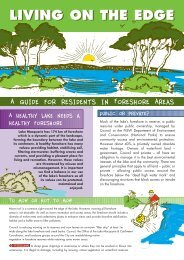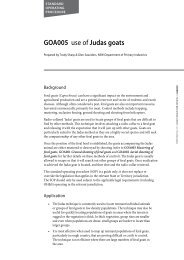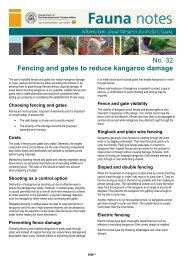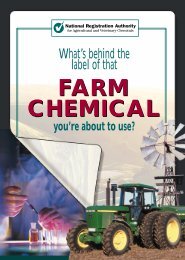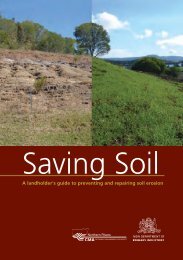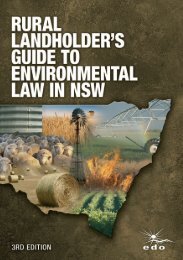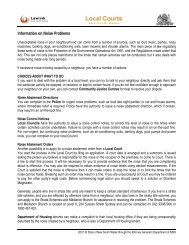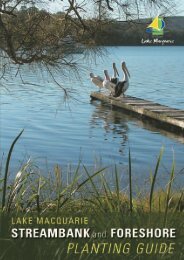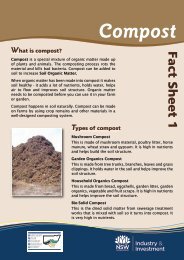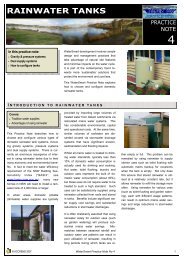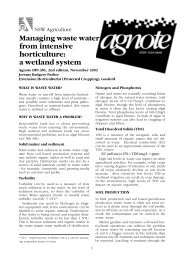Agricultural Fire Management Guidelines - Guide to Rural ...
Agricultural Fire Management Guidelines - Guide to Rural ...
Agricultural Fire Management Guidelines - Guide to Rural ...
Create successful ePaper yourself
Turn your PDF publications into a flip-book with our unique Google optimized e-Paper software.
Section 2 BackgroundTypes of fuel breaksBare earth breaksBare earth breaks:• can be ploughed, graded, burnt and/or sprayed <strong>to</strong>ensure they are clear of fuel;• may s<strong>to</strong>p a fi re under low fi re danger conditions withoutanyone being present <strong>to</strong> fi ght the fi re;• will behave more like slashed breaks if there is somefuel left sitting on the surface. <strong>Fire</strong> will often move acrossslashed or mown breaks unless someone actively puts i<strong>to</strong>ut;• are less effective if nearby trees are producing embersthat can be blown across the break; and• may require a permit if they remove native vegetation. Grassfi res: Fuel, Weather and <strong>Fire</strong> Behaviour(Cheney and Sullivan 1997)Slashing and mowingSlashing and mowing are common ways <strong>to</strong> reduce fi rehazards. The rate of fi re spread in dry slashed grass isabout the same as in dry standing grass. However, the fl ameheight is approximately halved in the slashed grass, makinga fi re in slashed grass easier <strong>to</strong> control.Fuel reduction burningProperly conducted fuel reduction burning can be effectivein providing a fuel break. Fuel reduction burning should onlybe carried out with appropriate permits, with considerationof environmental issues and by people with experience inburning operations.Figure 16: Crop that has been cut and baled,providing hay and a fuel break18 On the Land: <strong>Agricultural</strong> <strong>Fire</strong> <strong>Management</strong> <strong><strong>Guide</strong>lines</strong>




